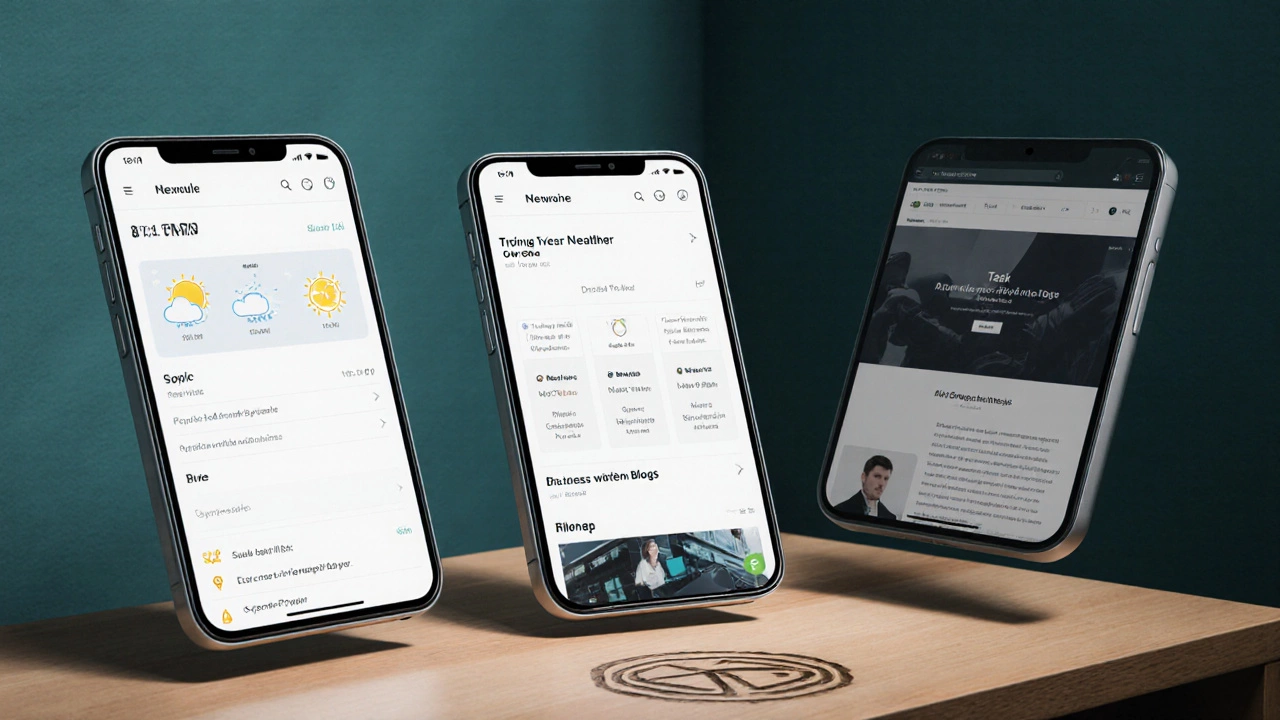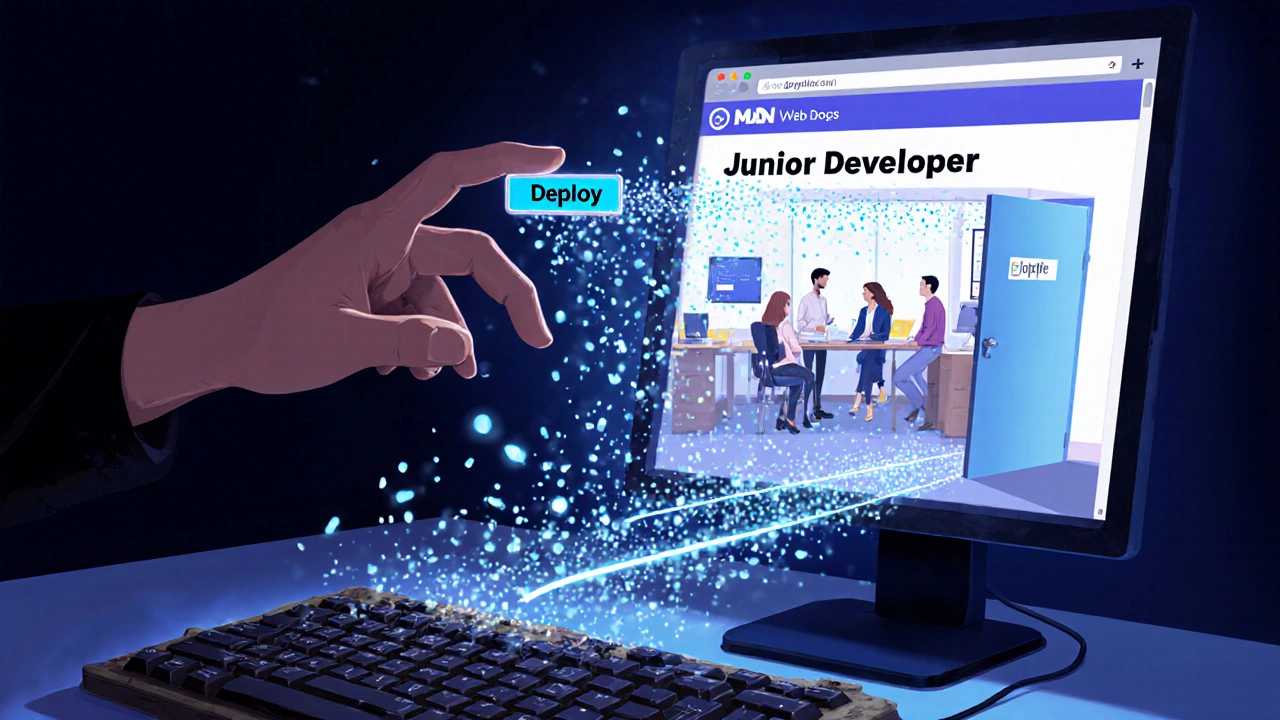Portfolio Project Calculator
Your Portfolio Progress
Enter how many projects you've built and their complexity level
Job Readiness Assessment
Based on industry standards in 2025
What Makes a Project Stand Out
- Live demo link (Netlify/Vercel)
- GitHub repository with clean code
- Written explanation of your process
- Real-world functionality (not just tutorials)
You don’t need a computer science degree to build websites that people actually use. In 2025, more than 60% of professional web developers didn’t graduate with a CS degree. Many of them started with nothing but a laptop, a free tutorial, and a stubborn refusal to give up. So yes-you can be a self-taught web developer. But it’s not as simple as watching YouTube videos and calling yourself a developer by Friday. The real question isn’t whether it’s possible. It’s whether you’re ready to do the work.
What Being a Self-Taught Web Developer Really Means
Being self-taught doesn’t mean learning in isolation. It means taking ownership of your education. No professor grading your code. No syllabus telling you what to study next. You decide what to learn, when to push through frustration, and how to measure your progress.
Most people who fail at self-teaching do it because they treat it like a hobby. They watch one tutorial, build a button that changes color, and think they’re ready for a job. Real web development isn’t about isolated tricks. It’s about solving problems-like making a form work across browsers, fixing a slow-loading page, or connecting a frontend to a database without exposing your API keys.
Successful self-taught developers treat learning like a job. They show up every day. They build something, even if it’s small. They get feedback. They fix what’s broken. They don’t wait for permission.
The Skills You Actually Need to Get Hired
Employers don’t care if you took a course at Harvard. They care if you can deliver working code. Here’s what matters right now in 2025:
- HTML and CSS-not just the basics. You need to know flexbox, grid, responsive breakpoints, and how to make layouts work on phones, tablets, and 4K monitors without breaking.
- JavaScript-not just jQuery. Modern JavaScript (ES6+) is non-negotiable. You need to understand async/await, fetch API, DOM manipulation, and how to structure code with modules.
- At least one frontend framework-React is still the most common, but Vue and Svelte are growing fast. Pick one, build three projects with it, and understand state management.
- Version control with Git-you must know how to commit, branch, merge, and resolve conflicts. GitHub isn’t just a portfolio-it’s your professional resume.
- Basic backend knowledge-even if you’re a frontend dev, you need to understand how data flows from server to browser. Learn how to make API calls, read JSON, and understand REST or GraphQL.
- Deployment-building something that runs on your laptop isn’t enough. Learn how to deploy a site using Netlify, Vercel, or GitHub Pages. If you can’t show a live link, you’re not done.
That’s it. No need to learn Python, Ruby, or Java unless you want to go full stack. Focus on these six areas, and you’ll be competitive for junior roles.
Where to Learn (Without Spending Thousands)
You don’t need to pay $15,000 for a bootcamp. There are free, high-quality resources that top companies use to train their own engineers.
- freeCodeCamp-complete their responsive web design, JavaScript, and data visualization certifications. They’re project-based, and you get a certificate you can link on your resume.
- The Odin Project-a full-stack curriculum built by developers for developers. It’s structured like a real job: build, test, refactor, repeat.
- MDN Web Docs-the official documentation from Mozilla. If you’re confused about how something works, go here first. It’s the most trusted source on the web.
- YouTube channels-Web Dev Simplified, Kevin Powell, and Traversy Media break down complex topics in under 10 minutes. Watch, pause, code along.
- Frontend Mentor-real-world design challenges. You get Figma files, build the site, then compare your solution to the official one. This is how you learn to think like a pro.
Don’t jump between courses. Pick one path-like The Odin Project-and stick with it until you finish. Switching too often is the #1 reason people never get to the finish line.

Build a Portfolio That Gets Noticed
Three projects. That’s all you need to start applying for jobs. But they can’t be clone sites or tutorials. They need to solve real problems.
Here are three portfolio project ideas that stand out in 2025:
- A weather app that uses a public API, lets users save favorite locations, and works offline using service workers.
- A task manager with drag-and-drop, local storage, and dark mode. Bonus: add a feature that sends a weekly email summary using a free email API like Resend.
- A personal blog built with Markdown files and a static site generator like Astro or Next.js. Write five real posts-about your learning journey, a bug you fixed, or a tool you discovered.
Each project should have:
- A live link (hosted on Netlify or Vercel)
- A GitHub repo with clean, commented code
- A short write-up explaining what you built, what you struggled with, and what you learned
Don’t just say “I built a website.” Say “I built a task manager that helps busy students track assignments. I used React for state, localStorage for persistence, and learned how to handle edge cases when the browser blocks cookies.” That’s the kind of detail that gets interviews.
The Hidden Roadblocks (And How to Beat Them)
Most people quit not because it’s too hard-but because they feel alone. Here’s what nobody tells you:
- Imposter syndrome is normal. Even senior devs feel like frauds sometimes. The difference? They keep going anyway.
- Learning plateaus happen. You’ll hit a point where nothing seems to click. That’s not failure-it’s your brain consolidating. Take a break, build something fun, then come back.
- No one will hand you feedback. Join free communities like Dev.to, Reddit’s r/learnprogramming, or Discord servers for web devs. Post your code. Ask for critiques. Don’t be defensive. Thank people for their time.
- Job applications will go unanswered. You might send out 50 applications before you get one reply. That’s not rejection-it’s statistics. Keep building. Keep improving. Your next project might be the one that lands the job.
Track your progress. Keep a journal. Write down what you learned each week. After three months, look back. You’ll be shocked at how far you’ve come.

Can You Really Get a Job Without a Degree?
Yes. And here’s proof: in 2024, 43% of new hires at tech companies like Google, Meta, and Apple were hired without a traditional CS degree. Companies are shifting focus from credentials to skills.
Startups and small agencies are even more open. They need people who can ship code fast-not people who memorized algorithms.
When you apply, lead with your portfolio. In your cover letter, say: “I learned web development on my own over the past 8 months. Here are three projects I built. I’m not looking for a chance-I’m ready to contribute.”
Companies don’t hire degrees. They hire problem-solvers.
What Comes After Your First Job?
Getting hired is just the start. The real learning begins on the job. You’ll work with legacy code, tight deadlines, and teammates who don’t explain things clearly. That’s okay. That’s growth.
Keep building side projects. Learn about accessibility, performance optimization, and testing. Read code from open-source projects. Contribute to one-even if it’s fixing a typo in documentation.
Within two years, you could be a senior developer. Or you could start your own agency. Or build a SaaS tool that solves a problem you’ve experienced. The path isn’t fixed. But it’s open.
Do I need a computer science degree to become a web developer?
No. A degree is not required. In 2025, over 60% of professional web developers are self-taught. Employers care more about your portfolio, problem-solving skills, and ability to ship code than your diploma. Focus on building real projects and demonstrating competence.
How long does it take to become a self-taught web developer?
It takes 6 to 12 months of consistent effort-about 15 to 20 hours per week-to go from beginner to job-ready. If you study full-time, you can land a junior role in 4 to 6 months. The key isn’t speed-it’s consistency. Building three solid projects takes longer than watching 50 tutorials, but it’s what actually gets you hired.
What’s the best free resource to learn web development?
The Odin Project is the most comprehensive free curriculum for aspiring web developers. It covers HTML, CSS, JavaScript, React, and backend basics with real-world projects. freeCodeCamp is also excellent for beginners, especially if you prefer interactive coding. MDN Web Docs is the go-to reference for understanding how things actually work under the hood.
Can I get a job if I only know front-end development?
Yes. Many companies hire front-end developers to focus on user interfaces, animations, and accessibility. You’ll still need to understand how data flows from a server, make API calls, and work with JSON. But you don’t need to master Node.js, databases, or server configuration unless you want to. Specializing in front-end is a valid and in-demand path.
What should I do if I get stuck for days on a problem?
Stop trying to solve it alone. Break it down: What exactly is the error? When did it start? What did you change last? Search the exact error message on Google or Stack Overflow. If you still can’t fix it, post your code on a forum like Dev.to or Reddit with a clear question. Most developers have been stuck for days-asking for help is a skill, not a weakness.
Start Today. Not Tomorrow.
You don’t need to wait for the perfect time. You don’t need to buy a new laptop. You don’t need to quit your job. All you need is one hour today.
Open freeCodeCamp. Do the first lesson. Build the first button. Then come back tomorrow and do it again.
The web doesn’t care how you learned. It only cares what you build.
